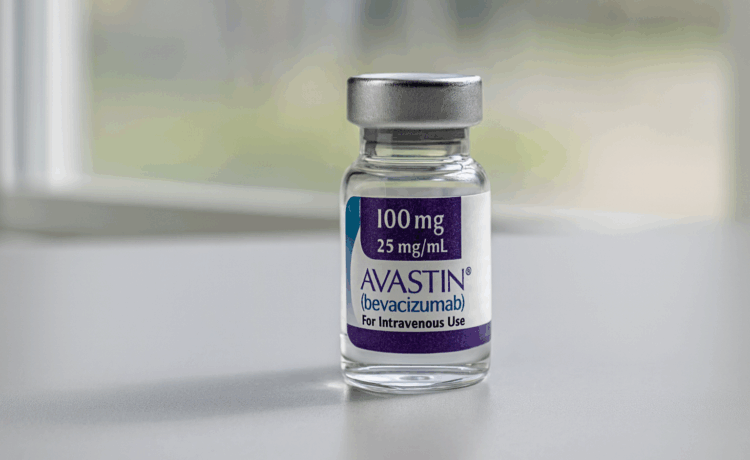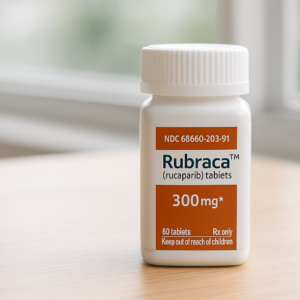Last Updated on August 4, 2025
A cancer diagnosis often brings unexpected costs, especially when treatment involves expensive medications like Avastin.
Biologic medications such as Avastin can be financially overwhelming, even with insurance coverage. Biosimilars to Avastin may offer some relief, but costs can still be substantial. At NeedyMeds, our goal is to provide you with resources including Avastin coupons—to help you better manage these treatment expenses.
This article, the first in our series, will help you understand the real cost of Avastin, introduce available savings options, and explain exactly how to access financial support.
What Is Avastin?
Avastin (generic name: bevacizumab) is a biologic targeted therapy used in combination with chemotherapy to treat a variety of cancers, including
- Colorectal cancer
- Non-small cell lung cancer
- Glioblastoma (a type of brain tumor)
- Kidney cancer
- Cervical cancer
- Ovarian cancer
- Appendix cancer
It works by targeting and inhibiting a protein called vascular endothelial growth factor (VEGF). VEGF plays a key role in the formation of new blood vessels, which is a process known as angiogenesis. Tumors need blood vessels to grow and spread, and by blocking VEGF, Avastin essentially “starves” the tumor by cutting off its blood supply.
It is administered through intravenous infusion and typically given every 2 to 3 weeks, depending on the treatment plan. Because it is a biologic drug derived from living cells, it’s more complex to manufacture and generally more expensive than traditional chemotherapy. Avastin’s original patent expired in 2019, paving the way for biosimilars–lower-cost biologic alternatives–to enter the market.
This makes Avastin a critical, yet costly, part of cancer care for many patients.
How Much Does Avastin Cost?
Avastin’s list price ranges from $5,000 to $10,000 per infusion, based on dosage and treatment schedule. Its complexity compared to traditional chemotherapy significantly contributes to the high cost, as do additional factors such as infusion center fees, geographic location, and overall treatment duration.
The expiration of Avastin’s original patent allowed biosimilars to enter the market. Biosimilars are essentially the biologic equivalent of generic medications, offering similar therapeutic effects at typically lower costs. Since their introduction, Avastin biosimilars have rapidly gained market share, significantly reducing the use of the original brand-name Avastin.
How Many Biosimilars Does Avastin Have?
Avastin in particular has four biosimilars, including Mvasi, Zirabev, Alymsys, and Vegzelza. These biosimilars have been approved by the FDA, meaning they act the same way as Avastin.
Biosimilars are trickier than generics, and the market price can still be out of reach for many patients who are paying out of pocket. They are often made by different manufacturers who have their own savings programs for these medications.
With savings programs available for both Avastin and its biosimilars, it’s worth it to explore what they offer. That’s why in the coming weeks we are going over each biosimilar, starting with Avastin this week.
Is There a Co-Pay Savings Program for Avastin?
Yes, Genetech offers a copay program for Avastin for patients who are commercially insured.
The program covers up to $25,000 in costs per calendar year, and patients may pay as little as $0 per infusion. In addition to commercial insurance, you must:
- Have a valid prescription for Avastin
- Be receiving treatment in the United States and its territories
- Not have federal or state-funded insurance (Medicare, Medicaid, Tricare, etc)
Make sure to follow our Avastin coupon page on NeedyMeds for updates on any changes to the program.
How Can I Afford Avastin Without Insurance?
If you don’t have insurance, you may be eligible to receive Avastin at no cost through the Genentech Patient Foundation. This is a Patient Assistance Program (PAP) that provides medication to uninsured and underinsured patients.
In addition to having no insurance, you may qualify if:
- You have insurance, but it doesn’t cover your Genentech medicine
- You have insurance that covers Avastin, but your out-of-pocket maximum is more than 7.5% of your yearly income
To be eligible, your total yearly household income must fall within these limits:
| Household Size | Yearly Income |
|---|---|
| 1 person | Under $75,000 |
| 2 people | Under $100,000 |
| 3 people | Under $125,000 |
| 4 people | Under $150,000 |
Applications can typically be submitted online or by fax, and decisions are usually made within a few business days. If approved, you can remain enrolled for as long as you qualify for the program (there is no need to re-enroll).
Our page on the Genetech Patient Foundation covers the basics on who’s eligible and anything else you need for a successful application
Final Thoughts
Avastin is a powerful and essential tool in modern cancer care, but its high cost shouldn’t stand between patients and treatment. Financial assistance programs, such as copay savings cards and Patient Assistance Programs, can make a profound difference in affordability.
Whether you’re insured or uninsured, there are resources available to help reduce or cover the cost of this drug. At NeedyMeds, we make it easy to find and apply for these programs.
Visit our website to get started, or call us at 800-503-6897 if you need help navigating your options.




